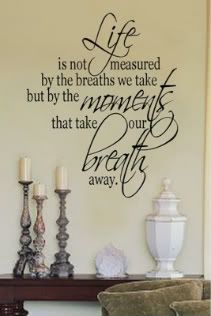Planning Stage
Long before you talk to any website designers, or start to think about the colors, features and format of your site, you need to spend some time thinking about what your goals are for having a website. Building a website is like building a house. The more time you spend thinking about how the house will be used, and in planning the foundation, the more options you will have. Spend a moment writing the answers to these questions to help you through the planning stages.
■ Who is your target market and what do you want your site to accomplish?
■ Is it your goal to sell art and use your site as an e-commerce venue?
■ Is it your goal to attract galleries and dealers who may want to represent you?
■ Are you looking for a place to archive the development of your work?
■ Do you have the skills to regularly update and manage your site, or will you need to contract these services?
■ Have you purchased your domain name?
■ Have you organized and assembled all your relevant materials; slides or digital images, biography, artist’s statement, reviews?
Once you have answered all of the questions, and prepared your materials, you are ready to decide if you should even have your own website, or become a part of the many online web services designed for artists. Unless you are prepared to spend at $1000- $2500 and pay someone every time you need to change or update you site, you should probably think about going with one of the companies that services artists with a pre-designed template that is user friendly and you can change and update yourself. www.artspan.com is one of many of these services. Remember, there is nothing wrong with not having your very own website…the goal is to get visibility on the internet and have a web address to send interested people….without that, you are as handicapped as someone without a telephone!
Although the internet is rapidly changing, if you have decided that your goal is to sell artwork off your site, you may be very disappointed. Think of your site as one of the billions and billions of stars in the universe. The only way most people find their way to your site, is if you give them your address, or if they get there from another site that you are linked to. Chances are small that anyone will stumble upon it, fall in love with your work, and want to buy something, site unseen. It’s not that this can’t happen, it’s just the odds of that happening are very, very slim.
The best possible goal for your site is to create a virtual identity, where interested collectors, dealers, curators can familiarize themselves with your work. Think of it like an opportunity to hand someone a brochure or catalog that they can peruse anonymously and at their leisure. Your hope being, after doing so, they would want to contact you and see your work in person. In order to accomplish this, it is necessary to put yourself in the mind of a busy, distracted art lover surfing the internet for an artist to love.
Resources by Sylvia White-ArtAdvice.com
■ Who is your target market and what do you want your site to accomplish?
■ Is it your goal to sell art and use your site as an e-commerce venue?
■ Is it your goal to attract galleries and dealers who may want to represent you?
■ Are you looking for a place to archive the development of your work?
■ Do you have the skills to regularly update and manage your site, or will you need to contract these services?
■ Have you purchased your domain name?
■ Have you organized and assembled all your relevant materials; slides or digital images, biography, artist’s statement, reviews?
Once you have answered all of the questions, and prepared your materials, you are ready to decide if you should even have your own website, or become a part of the many online web services designed for artists. Unless you are prepared to spend at $1000- $2500 and pay someone every time you need to change or update you site, you should probably think about going with one of the companies that services artists with a pre-designed template that is user friendly and you can change and update yourself. www.artspan.com is one of many of these services. Remember, there is nothing wrong with not having your very own website…the goal is to get visibility on the internet and have a web address to send interested people….without that, you are as handicapped as someone without a telephone!
Although the internet is rapidly changing, if you have decided that your goal is to sell artwork off your site, you may be very disappointed. Think of your site as one of the billions and billions of stars in the universe. The only way most people find their way to your site, is if you give them your address, or if they get there from another site that you are linked to. Chances are small that anyone will stumble upon it, fall in love with your work, and want to buy something, site unseen. It’s not that this can’t happen, it’s just the odds of that happening are very, very slim.
The best possible goal for your site is to create a virtual identity, where interested collectors, dealers, curators can familiarize themselves with your work. Think of it like an opportunity to hand someone a brochure or catalog that they can peruse anonymously and at their leisure. Your hope being, after doing so, they would want to contact you and see your work in person. In order to accomplish this, it is necessary to put yourself in the mind of a busy, distracted art lover surfing the internet for an artist to love.
Planning the Site Architecture
The goal of every website is to keep your visitor on your site
as long as possible. This is called the “stickiness factor.”
In order to accomplish this effectively, you have to understand how your navigational tools can work for you, or against you. One reason they call it “navigational” is because it is designed to allow the user to easily “navigate” or find their way through your site. Ideally, you want to steer the user, help them navigate your site in a way that will make you look good and keep them interested. The best way to do this is to think of your website like an onion, allowing users to peel the skin away and get deeper and deeper, if they choose to. A common mistake for a lot artists is to present their homepage as a smorgasbord… offering the visitor 6, 8 or even 10 possible links or places to go from the home page. If you do this, you are reducing your chances that your visitor will see what you want them to see. Keep your site simple. Your homepage should have no more than 3 options…work, bio, contact. That gives visitors a clear and concise choice. If they want to see your art, read about you, or contact you, your home page will easily direct them to exactly where they want to go.
Planning the Site Design
Depending on whether you are designing your own site, or have hired a designer to work with, will determine the complexity of the design. A lot of website designers like to use the opportunity of working with artists as a chance to show off their skills as web designers. Technology has grown in leaps and bounds over the last 5 years and it is possible to do almost anything that includes, sound, moving graphics, pop-ups, flash, video, you name it! The drawback to using many of these fancy bells and whistles is it is a distraction from what is really important… allowing the visitor to your site to get the information they want, and to get it fast. Anything that requires special software or long download times should be avoided. Remember, each click a visitor makes increases the chance that they will leave your site.Designing the Homepage
Your homepage is your most valuable piece of real estate. It is the page that will be visited by the most number of visitors. And, it is the page that will either draw them in or turn them away. When designing the homepage, it is important to remember the most basic rule in the newspaper industry… the most important information must always appear “above the fold.” As this applies to website design, your homepage must appear completely intact, without scrolling. You need to check that this remains true regardless of browser or screen settings. Your homepage needs to have an effective visual that is most representative of your current work, not a portrait, not a picture of you, not a logo, not an embellished graphic. Your name needs to be prominently featured. Remembering the brain sees the entire computer screen as one image, you want to always plant the image and the name simultaneously. Add your three navigational tools along the top or side, never at the bottom of the screen. Remember the purpose of your navigational tools is to help direct people exactly to where they want to go… ideally, what you want them to see. Make sure there is no extraneous information on the homepage. You want your visitors to see your work, read about your background, or contact you. Keep it simple.Driving Traffic to Your Site
Once you have a website that you can be proud of, it’s your job to get people there. Put your website address on your business card, stationary, even voicemail. Visit other sites on the internet trying to get them to include a link to your site. Take advantage of free placement services that will send your web address to 150 different search engines for free. Send a link to your site to all your friends and contacts. Spending time promoting your site, updating it and keeping it fresh is what will keep people coming back. Good luck!Resources by Sylvia White-ArtAdvice.com












No comments:
Post a Comment
Thank You for stopping by and hope you had enjoy your visit!
Your inspiring comments make me smile and inspires me to create everyday.
Happy Creating,
MoMeMa